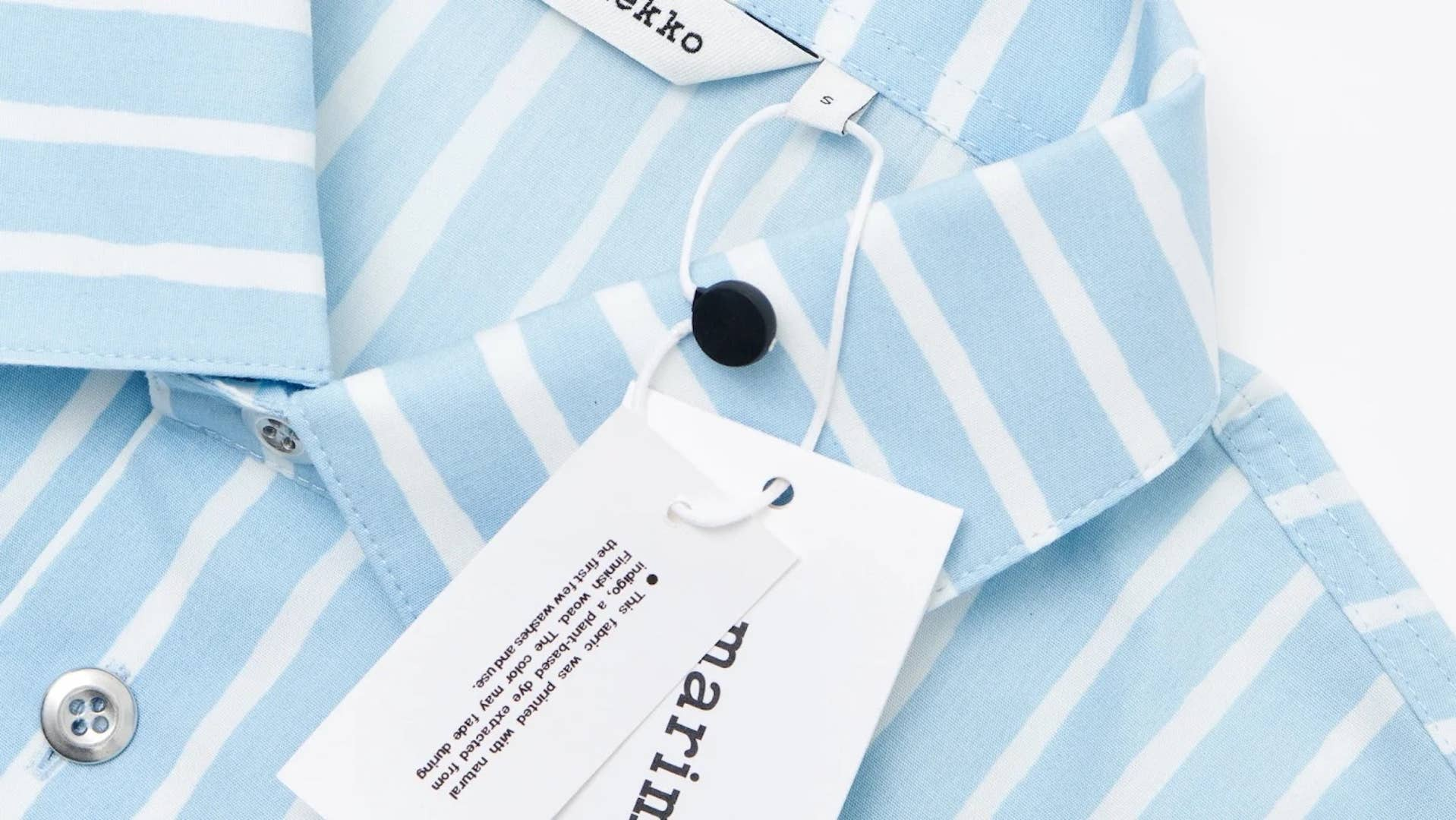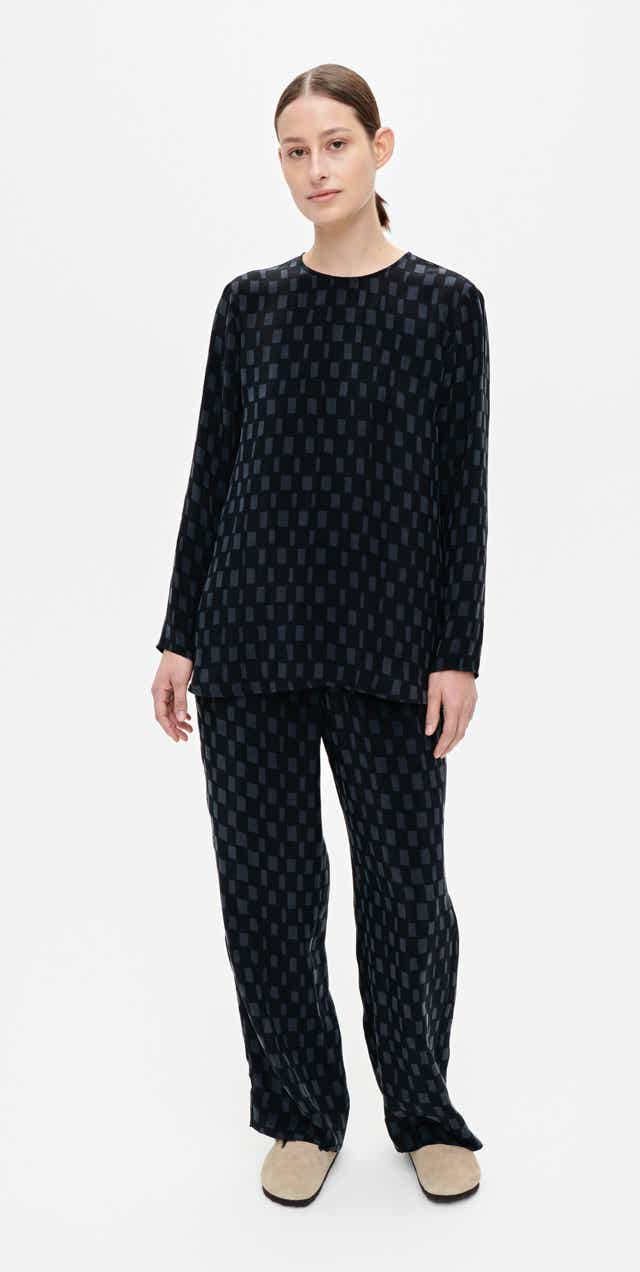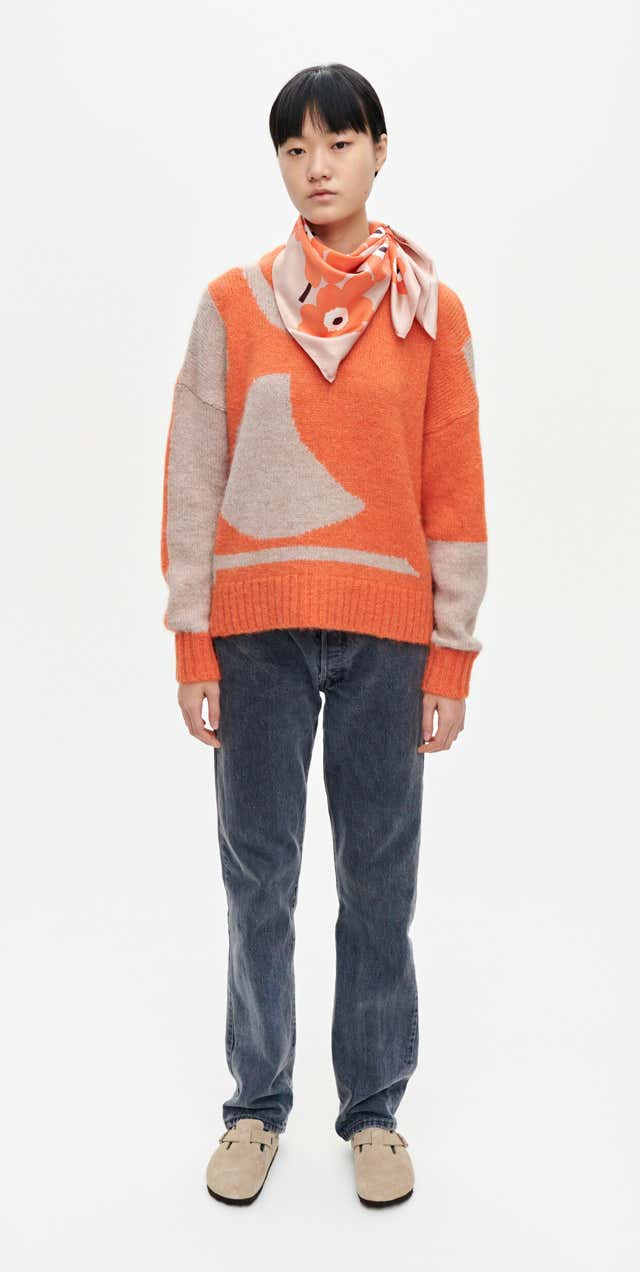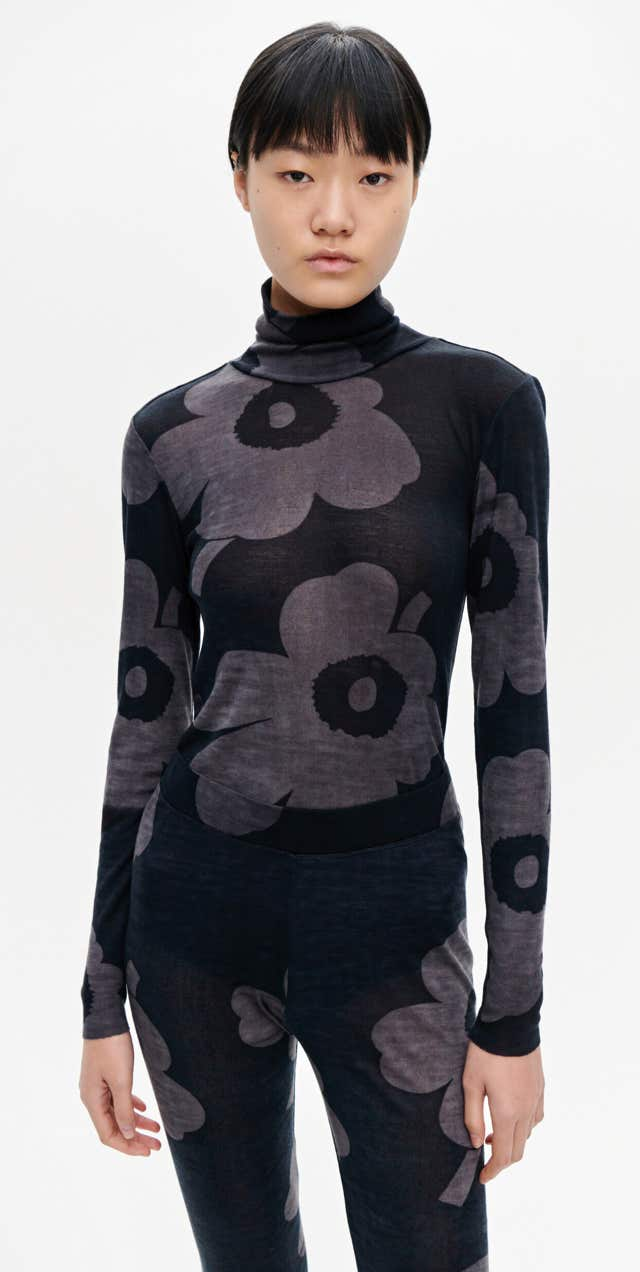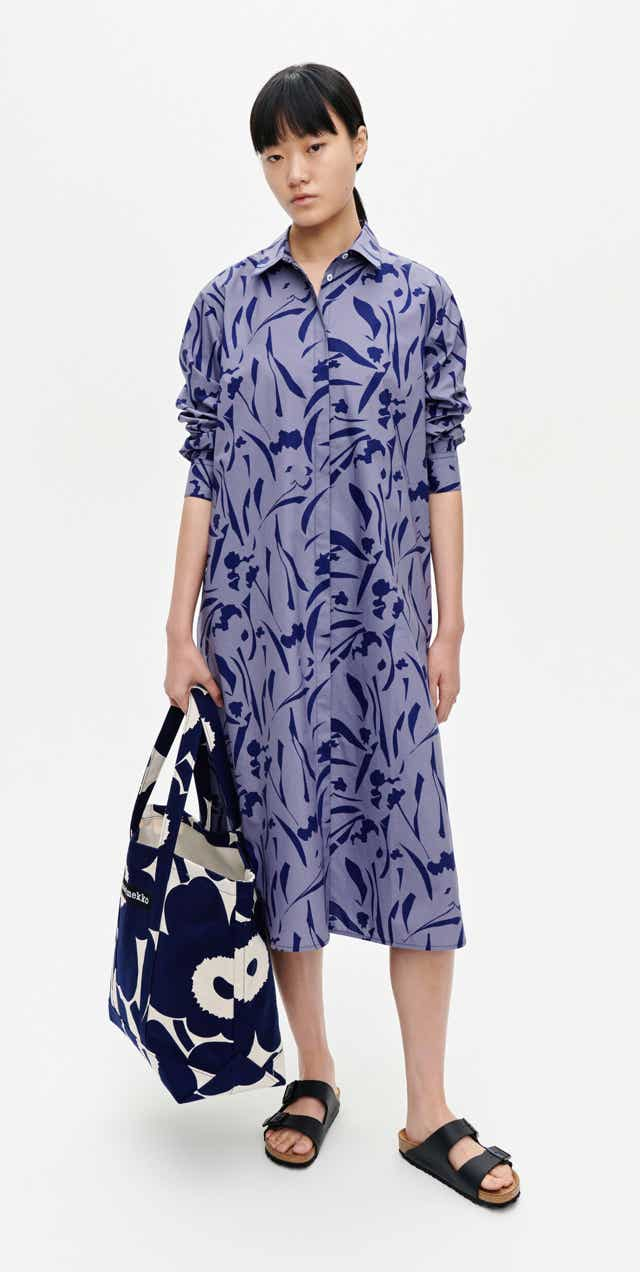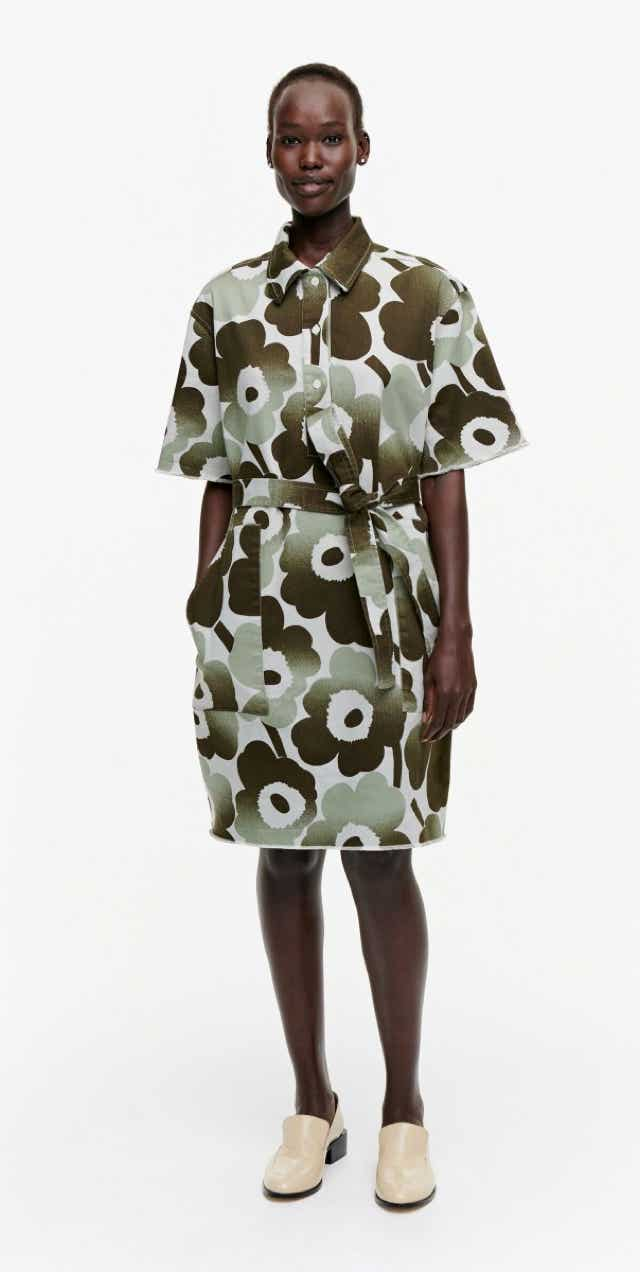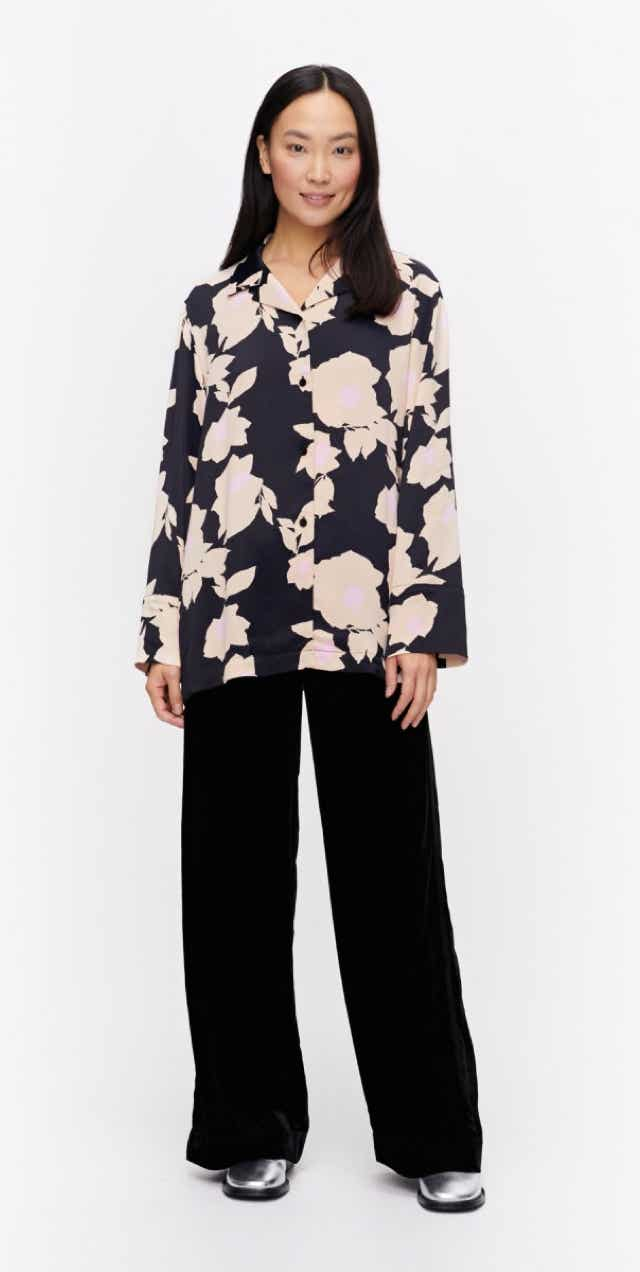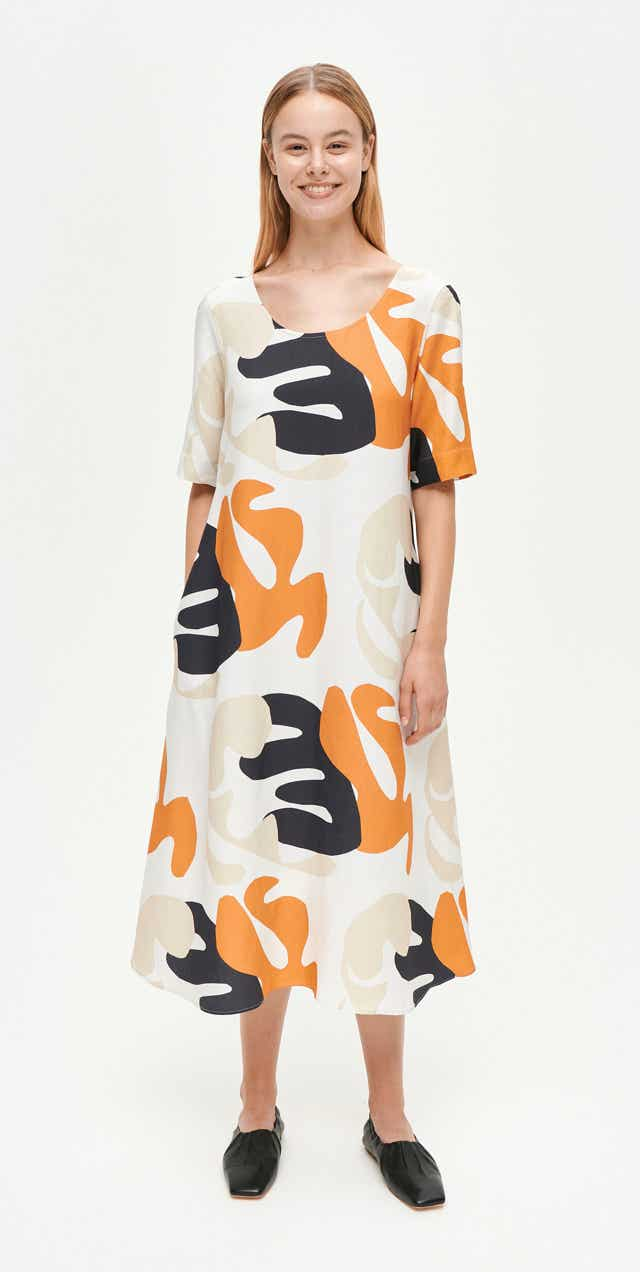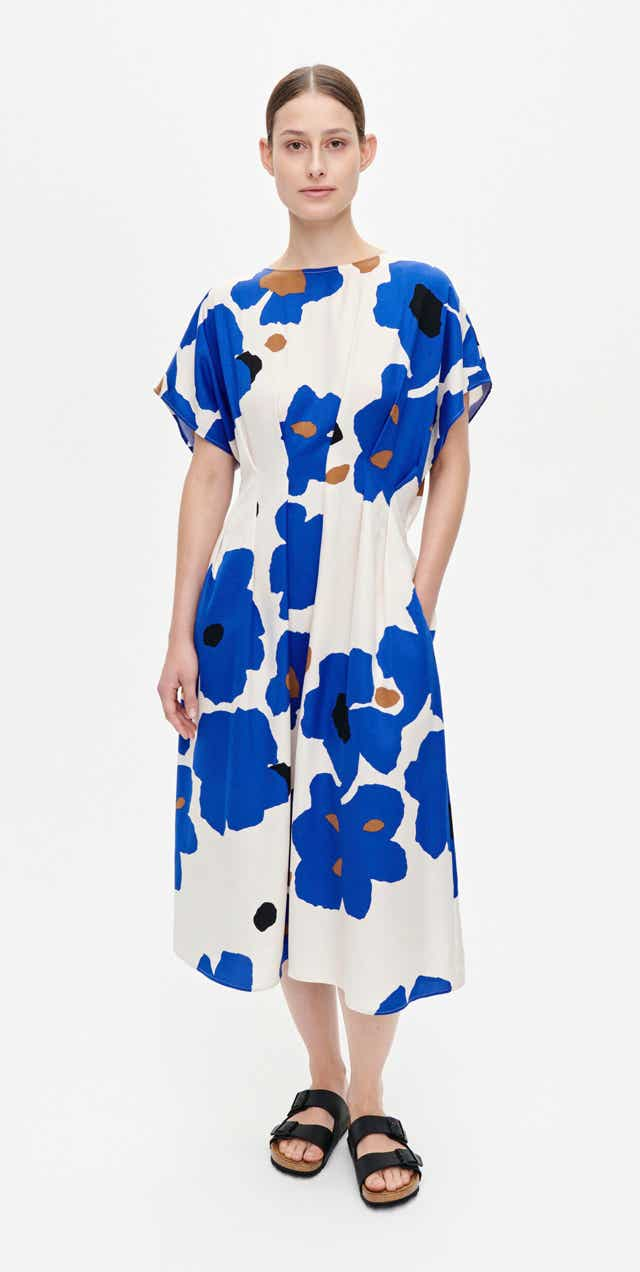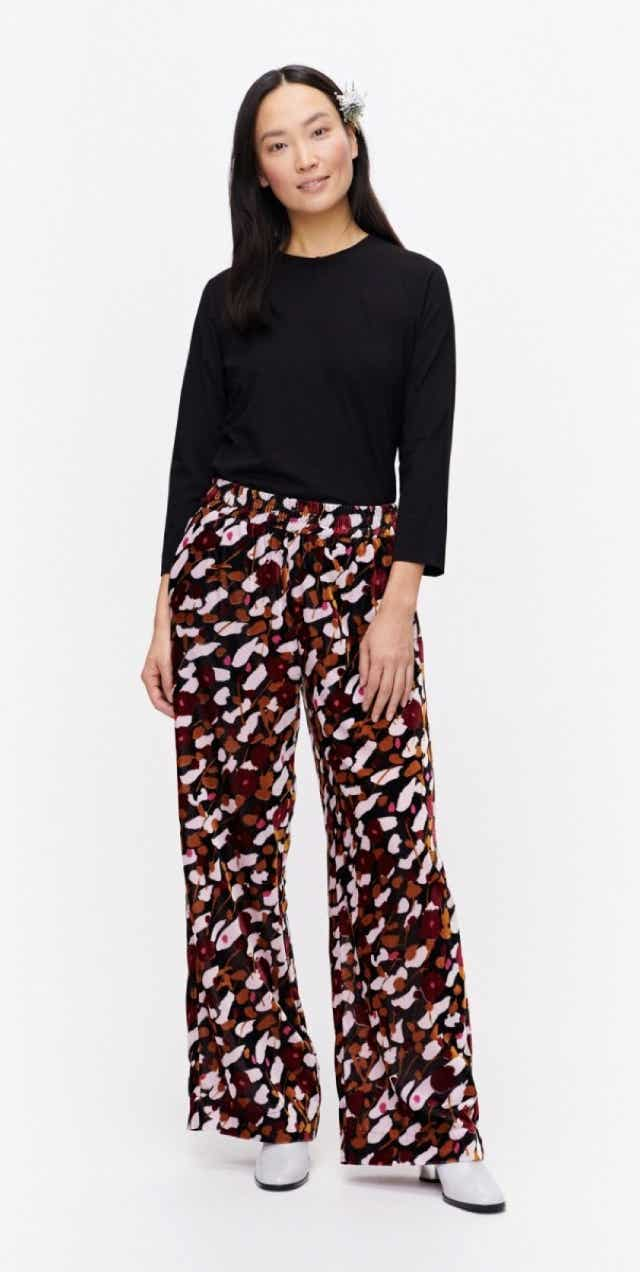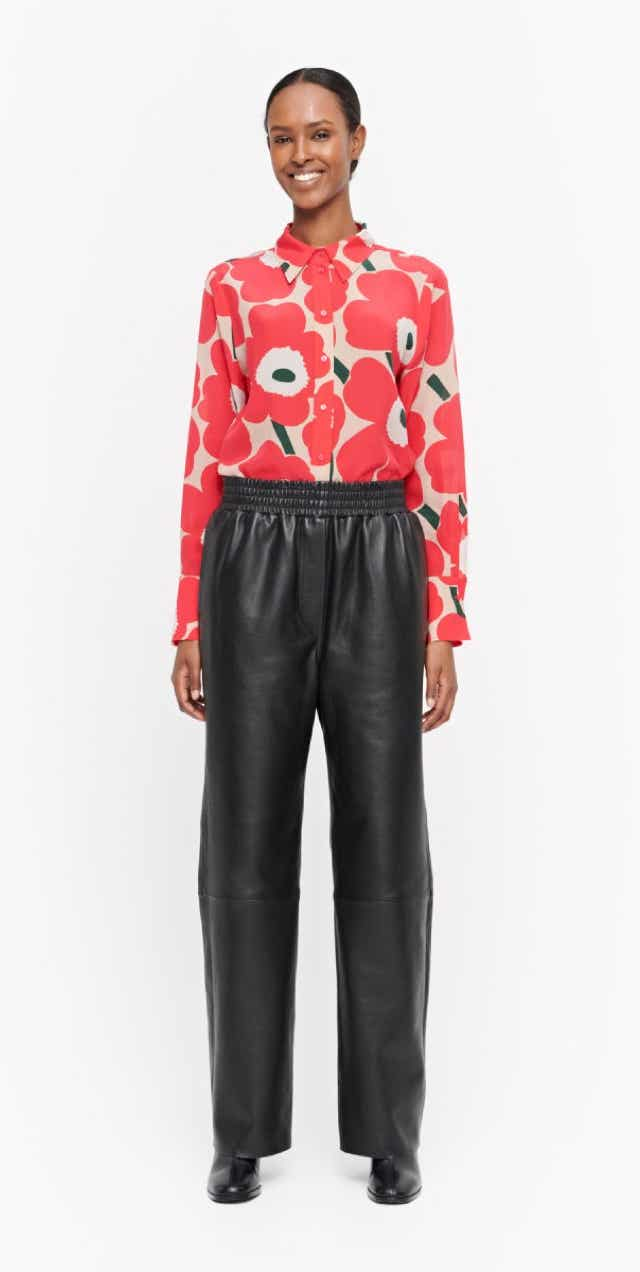Take proper care of your Marimekko items, and they will bring you years of joy
With their timeless appeal, there is every reason to take good care of your Marimekko products.
And if you follow these simple instructions and tips, many will last until it’s time to pass them on to the next generation.
Extending the life of your clothing, bags, accessories and home items – and thereby eliminating the need to buy more – is also an effective way to reduce your environmental impact. Marimekko strives to make products that last, and they sincerely invite you to play your part by giving them a long, loving life.
Cupro
Cupro is a regenerated cellulose fiber with a silky, soft feel.
The beautifully drapey cupro fabrics are lightweight and breathable.
Marimekko recommends storing your cupro items folded in an airy space.
Shaping & drying
Carefully reshape the product into its original shape while damp and hang to dry.
Storing
Washing
Marimekko recommends washing cupro products separately inside-out with a delicate care program in the washing machine.
Please do not wring your cupro items.
Ironing
Iron your cupro items inside-out. Ironing also helps in restoring the product into its original size, shape and feel.
Wool blends
Wool-blend garments have the warmth and natural appearance of wool but with added strength and luster.
To take the best possible care of your wool-blend products, always check the care label for exact instructions.
Storing
Marimekko recommends storing your wool-blend garments on a sturdy hanger in an airy space. Use a garment bag for off-season storage.
Removing pilling
Pilling (the small fuzzy balls of short fibers) sometimes occur on a wool-blend item, especially when it’s new.
They are best removed by brushing your item with a soft brush.
Cleaning
Wool is resistant to stains, so airing is usually enough to make your item feel clean and fresh again. Remove small stains as quickly as possible by brushing or gently spot cleaning the article.
Wool
Wool is a wonderful material with superior insulation performance, moisture absorbency, and elasticity.
Washing
When it’s finally time to wash the item, please make sure to check the care label for exact instructions.
Removing pilling
Pilling (the small fuzzy balls of short fibers) sometimes occur on a wool-blend item, especially when it’s new. Minor pilling is typical of all-natural fiber products with a soft surface. The easiest way to remove pilling is with a wool comb or simply use your fingers to pick the fuzzy pills.
Storing
When storing your wool items, fold them up and keep them in an airy space.
Refreshing
Wool is a natural fiber that’s highly resistant to stains. Airing your wool garment is usually enough to keep it clean and fresh.
The ideal weather for airing is cold and damp.
Cotton
Cotton is a soft and natural fiber that’s breathable and comfortable to wear. Cotton garments are easy to care for and will retain their original appearance when following these simple instructions.
Setting the temperature
Washing
Marimekko recommends washing dark and strong-colored items separately or with like colors in plenty of water. Some dye may come off, especially in the first few washes. Soaking is not recommended.
Reshaping
A cotton product may shrink in the first wash. After washing, reshape the item into its original size. Cotton is best ironed when slightly damp.
Please follow the recommended washing temperature since washing at too low temperatures may cause unwanted color transfer.
Patterned and strong-colored items should be washed inside-out.
Heavy cotton twill
Cotton twill is a dense fabric type hailed for its durability and versatility. Because of these properties, cotton twill is used for jeans and other durable items. The single best thing you can do to maintain the original color and shape of your cotton twill garment is washing it as little as possible.
Refreshing & washing
Skip the softener
Elastane is sometimes used in cotton twill garments for extra comfort and stretch. If your item contains elastane, refrain from using a fabric softener.
Let it rest
Let your garment rest between wears. This gives the fabric a bit of time to recover and return to its original shape.
Storing
Marimekko recommends storing your cotton twill garments on a hanger or folded in an airy space.
Airing is an excellent way to make your cotton twill item feel fresh again. When it’s finally time to washing the garment, check the care label for exact instructions. Always wash inside-out with like colors. Hang to dry afterward.
Sateen
Sateen fabrics have a glossy sheen and a smooth feel. It can be made from different fibers by using a particular weave structure. When it’s time to wash your sateen item, always check the care label for exact instructions.
Washing
Removing wrinkles
If needed, sateen items can be steamed or ironed on the reverse side to remove wrinkles.
Reshaping
Let your garment rest between wears. This gives the fabric a bit of time to recover and return to its original shape.
Storing
Store your sateen garments on a correctly sized hanger in an airy space.
Marimekko recommends washing your sateen items gently in plenty of cool water. Reshape the product to its original shape after washing and hang to dry on a correctly sized hanger.
Jersey
Jersey is a multipurpose material that has a pleasant feel and is delightfully easy to care for.
Storing
Marimekko recommends storing your printed items on a hanger or folded up in an airy space. This will help prevent sharp creases on the print.
Reshaping & ironing
A jersey garment may shrink in the first wash. You can reshape the item by hand to its original size after washing. Products with a print should always be ironed on the reverse side.
Washing tip #1
Washing tip #2
Marimekko recommends washing any strong-colored or printed items inside-out separately or with like colors in plenty of water. This will help keep the colors and prints beautiful for a long time.
Please use the recommended washing temperature stated on the care label as lower temperatures may cause unwanted color transfer.
Soaking your item is not advisable.
Linen
Linen is a natural fiber that’s loved for its beautiful luster, pleasant feel, and unique ability to absorb moisture. Linen garments are warm when it’s cold and cool when temperatures rise. It’s essential that your linen garment is loose enough to prevent seams from fraying.
Washing
Wash linen items separately, inside-out, and in plenty of water. Some dye may come off darker fabrics, especially in the first few washes.
Drying
Linen items can be spin-dried on a gentle cycle. Reshape your product to its original size after washing. Please do not tumble dry linen.
Removing wrinkles
The best way to get rid of creases and wrinkles is to iron your linen item when it’s slightly damp. Marimekko recommends storing your linen items on a right-sized hanger in an airy space.
Silk
Silk is a light and resilient natural fiber that repeats colors beautifully.
Getting it right
Make sure to check the care label for exact instructions before washing it. “Wash by hand” should be taken literally. Avoid wringing or rubbing an item.
Washing
Silk items should be washed gently in plenty of cool water with a detergent that’s made for silk. Washing your items separately and inside-out will help keep the colors even.
Taking precautions
Silk is a delicate natural material that’s easily affected by chemicals such as perfumes or hairsprays. Sunlight may also weaken silk fibers or fade colors.
Ironing
Silk items are best ironed on the reverse side through a damp cloth. Please use appropriate heat.
Storing
Marimekko recommends storing your silk items in an airy space. Use a sturdy hanger or another appropriate solution.
Down
Down is a light and durable insulator. With the right care, the airy natural material will retain its good qualities for a long time. At Marimekko, they only use down that meets the Responsible Down Standard. To best take care of your particular garment, always check the care label for exact instructions.
Washing
Wash your down garments inside-out, selecting a delicate program with plenty of water. Make sure to use the right type and amount of detergent. Marimekko doesn’t recommend using a fabric softener.
Drying
After washing, down products should be tumble dried at a low temperature. Keep in mind that this will take several hours.
To help disperse the down as evenly as possible, fluff your garment halfway through the drying cycle or consider using dryer balls.
Storing
Always dry your down items properly before storing them. For short-term storage, Marimekko recommends hanging your garments on a sturdy hanger in an airy space. For off-season storage, keep your down items flat, for example, in a box.
Lyocell
Lyocell is a modified cellulose fiber with a lower-impact production process. This soft yet firm material drapes nicely.
Washing
Marimekko recommends washing lyocell products separately inside-out and with plenty of water to keep the colors even. Boldly colored products may bleed when wet or dry, especially when new. Please do not soak lyocell items. Make sure to check the care label for exact instructions.
Reshaping & ironing
Carefully reshape the product into its original shape while damp and hang to dry or alternatively dry flat. The material may feel stiff after washing but will soften once dry and ironed. Please iron through a damp cloth.
Storing
Marimekko recommends storing your lyocell items on a right-sized hanger in an airy space.
Viscose
Viscose is a modified cellulose fiber with a soft feel and a pleasant faint sheen. Viscose does not cling with static. To properly take care of your viscose garments, always check the care label for exact instructions.
Skip the softeners
Please do not use softeners for viscose as they may weaken the fabric. Carefully reshape the product into its original shape while damp and hang to dry, or alternatively dry flat.
Viscose may feel stiff after washing, but it will soften once it dries and after it is ironed. Iron your viscose items through a damp cloth. Ironing also helps in restoring the product into its original size, shape and feel.
Storing
Marimekko recommends storing your viscose items on a right-sized hanger in an airy space.
Washing
To avoid chafing and laundry wrinkles, Marimekko recommends washing viscose products inside-out with plenty of water either by hand or with a delicate care program in the washing machine. Please do not soak viscose items.
Ironing
Velvet
Velvet is known for its distinctive soft feel and plush appearance. It’s a woven, tufted fabric with a short, dense pile made from synthetic or natural fibers. To properly take care of your velvet garments, always check the care label for exact instructions.
Cleaning
You can gently brush a velvet item to remove excess dirt. When thorough cleaning is needed, consider using a professional dry-cleaning service. Do not attempt to iron the surface of velvet.
Storing
Store your velvet garments on a sturdy hanger in an airy space. Use a garment bag when you’re storing your items for longer periods.
Refreshing
Marimekko recommends freshening your velvet items between wears by airing them. Steaming will effectively remove wrinkles and lift the pile. Always remember to steam on the reverse side of the fabric.
Leather
Leather is a natural and incredibly durable material. Take good care of it, and your leather item will age beautifully with time. Please make sure to check the care label for exact instructions on how to take the best care of your item.
Cleaning
You can wipe away dust and dirt with a soft brush or damp cloth. Marimekko recommends using special leather products to protect and spot clean your leather garments. When a thorough cleaning is needed, use a professional leather cleaning service.
Refreshing
To refresh your leather garment product between wears, simply place it on a sturdy hanger in an airy space.
Drying wet leather
Should your leather garment get wet, allow it to dry slowly at room temperature. You can dab the garment with a clean, light-colored cloth, but don’t attempt to speed up the drying process with a hairdryer or any other heat source.
